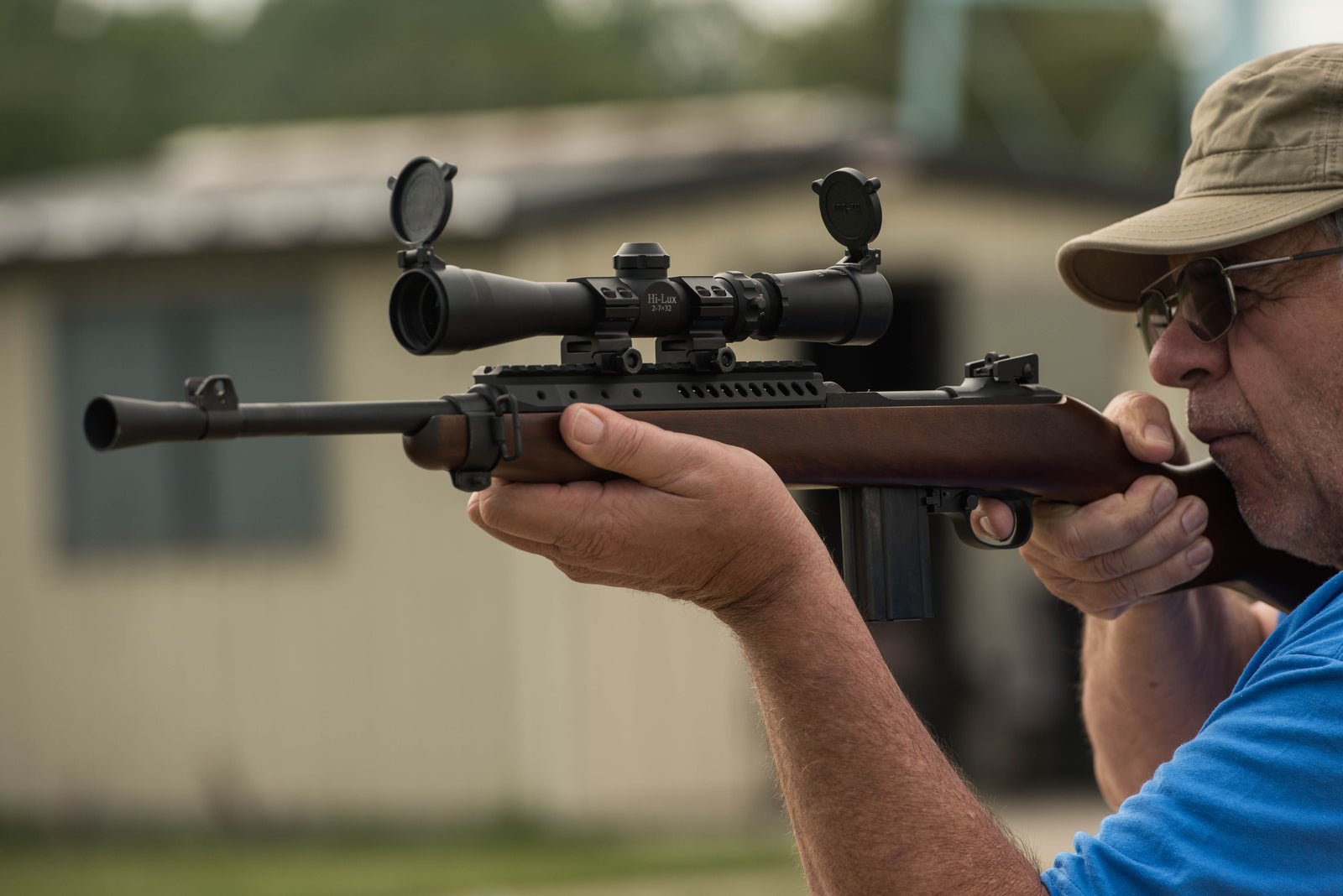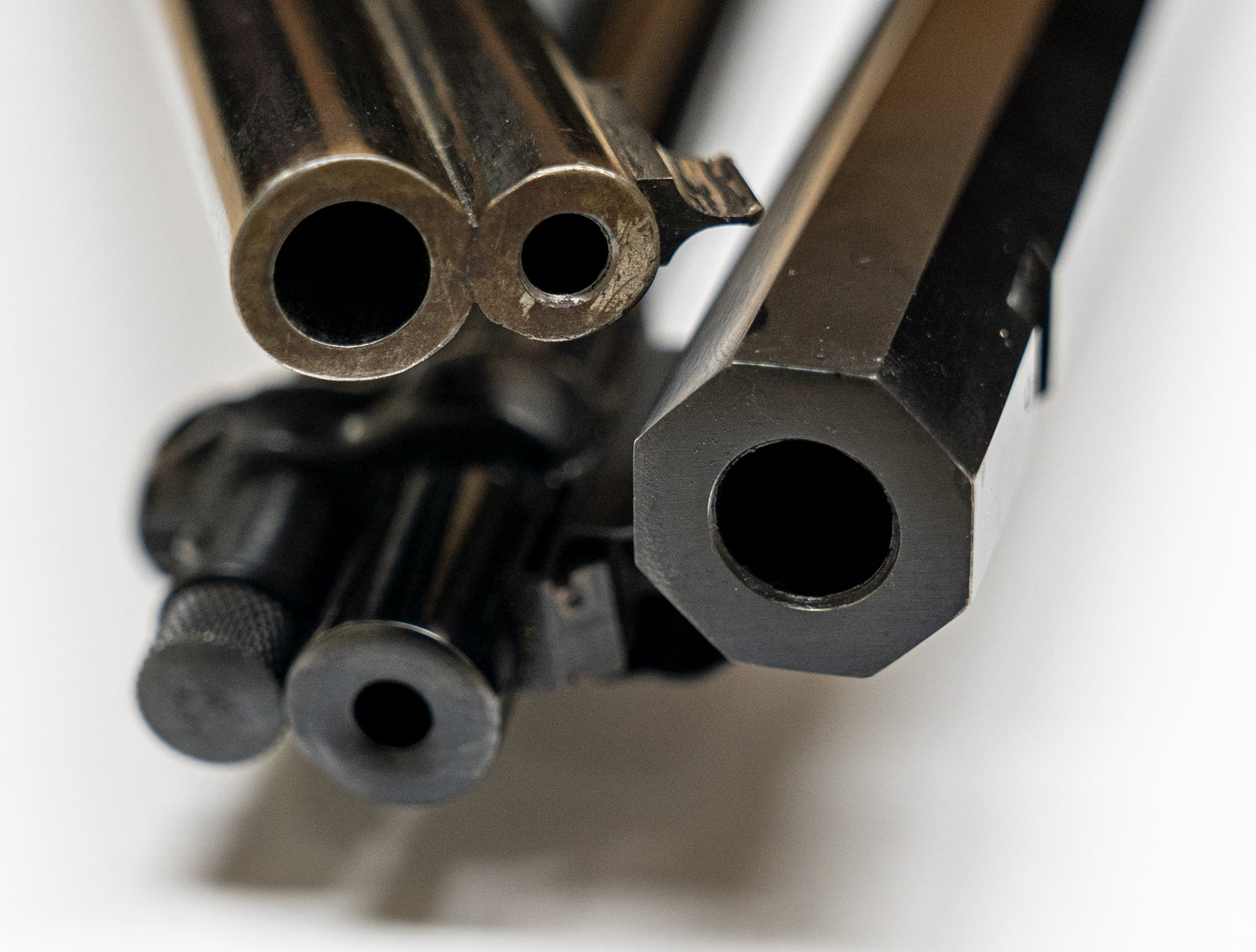Here are common classifications of bullets and what they may be used for. This is a list of some of the more common terms you may come across, though more seem to appear every day. Some bullets are differentiated by shape, some by material. You may find more than one bullet shape or composition for a given caliber. In all honesty, there should be multiple types of bullets for any caliber - but some calibers just don’t have a lot of variety.
The different types of bullets are commonly referred to by acronym, though the acronyms and initialisms are straightforward enough. Generally speaking, there are only a few terms that are used in combination: boat tail, spitzer, hollow point, and the different sorts of jackets. Ignoring bullets filled with unusual materials, these terms will give you a solid idea of how the bullet is shaped and coated. Just remember that a pointy bullet (spitzer) is more aerodynamic than a blunt one (round nose).

A box displaying the bullet’s details via acronym - here, a ‘full metal jacket boat tail’, weighing 150 grains.
Important Shapes
- Spitzer - One of the most common nose shapes in modern riflery. This is a bullet with a pointy tip, which helps dramatically with reducing drag. The tip is not always lead or copper; the tip can often also be plastic, which lends the ballistic properties of a spitzer tip while keeping the meplat of a hollow-point bullet safe. Upon hitting a hard object, the plastic tip helps the hollow point begin expansion. Whether the spitzer tip is lead, gilding metal, or polymer, this shape of bullet is often regarded as the one with optimal ballistic properties.
- Boat Tail (BT) - The tail of the bullet is tapered to help stabilize the bullet. The boat tail component offers an increase in BC (meaning better drag resistance), helping it maintain velocity and prevent wind drag. The actual difference between a flat bottom and boat tail bullet’s trajectory is often miniscule - an inch or so at 1000 yards - which means the difference will really only stand out at greater distances.
Common Bullet Names
- Lead Round Nose (LRN) - A dark gray (fully lead, no coating) bullet with a curved end having no distinct pointy tip. Due to the fully exposed lead, these bullets will leave more fouling in the rifle and some lead dust in the air. A classic and often-produced round, the lack of copper keeps the cost relatively low. This bullet has quite normal ballistic properties and delivers a balance between penetration and expansion on impact.
- Full Metal Jacketed (FMJ) - Another of the very common bullet types. This round is fully coated in some sort of metal; often copper, but possibly other metals. Due to the coating, less lead is deposited inside the barrel. This allows for a greater number of accurate shots before fouling starts to get in the way. These rounds are more likely to end up with a ‘through and through’ impact on an animal, without significant bullet expansion. You can also combine a full metal jacket with other qualities - such as in the classic FMJ boat tail.
- Semi-Jacketed (SJ) - These bullets are ones with no jacket covering the tip, though are otherwise coated. These bullets will have the aerodynamic property of their particular shape; though, unless these bullets are specified as hollow points or something else, they will typically be a round nose soft point. The exposed lead at the opening dumps more energy into the target with moderate mushrooming on impact, while the jacket assists in penetration.
- Semi-Jacketed Hollow Point (SJHP) - The bullet combines the increased penetration of a jacket with the expansion capabilities of a hollow point. The size and depth of the hollow can vary from one bullet manufacturer to another, which changes the ballistic properties and the potential expansion on meeting a target. The coating around the bullet also reduces lead fouling in the barrel to a large degree.
- Jacketed Hollow Point (JHP) - A hollow point bullet with a jacket that reaches up to the edge of the meplat. This allows the bullet to expand upon penetrating a target, while still penetrating quite well. These rounds will have the ballistic properties imparted to them by the hollow point, which can vary widely between different manufacturers. The jacketing around the bullet greatly reduces lead deposits in the barrel. To improve the ballistic properties and protect the rim of the hollow, manufacturers may stick a pointy plastic plug into the opening, known as a soft tip.
- Soft Point (SP) - The tip of the bullet is exposed lead, while the rest of the bullet is coated. Unless it’s otherwise specified, the nose of a soft point is typically curved. In actuality, this is another name for a Lead Round Nose that’s Semi-Jacketed. Of course, the exposed point could vary in width and shape, and isn’t restricted to a round nose shape.
- Boat Tail Hollow Point (BTHP) - A combination of boat tail stabilization and a hollow point. This may also be joined with varying levels of jacketing, possibly leading to a ‘jacketed boat tail hollow point’. A hollow point increases the drag at the front of the bullet (as there’s no tip to help cut through the air), while the boat tail reduces drag. If the hollow is plugged with a pointy piece of polymer, the bullet is now essentially shaped like a spitzer. Some long-distance bullets will instead have a micro-hollow-point, which actually increases the aerodynamic potential of the bullet. These micro-hollow-points may still be listed under the standard hollow point designation.
Rare Bullets
- Armor Piercing (AP) - The core of the bullet is an alloy as opposed to lead. The change in weight will affect your overall kinetic energy and your ballistic curve to some degree, but predicting how and how much is difficult without knowing all of the bullet’s other properties. You’re not likely to come across these rounds for hunting or target shooting, and shooting ranges likely won’t want you hitting steel targets with armor piercing rounds. They are remarkably fun to shoot at old car parts, however.
- Wad Cutter (WC) - This round is only used in a few particular cartridge sizes. You’re unlikely to ever use these at great range, as they have rather poor aerodynamic properties. This is a cylinder of lead, typically loaded at low pressure. The tip of the bullet will often sit flush with the neck of the case, and may be hollow at the rear. Due to the large amount of surface area rubbing on the inside of the rifling, this bullet will generate a lot of friction running down the barrel. These rounds are often used in handgun competitions because of the neat and easily measurable holes they cut in paper.
- Semi Wad Cutter (SWC) - Similar to the wadcutter, these have a broad and flat nose. They do, however, have a moderate cone shape running around the ogive. These tend to feed a little better for firearms that may have an issue with standard wadcutters, such as pistol-caliber carbines. The cone shape aids in aerodynamics, and the shorter bearing surface allows them to be fired at higher pressures (and speeds). They still make a neat hole, though not as perfectly as a wadcutter.





Leave a comment (all fields required)